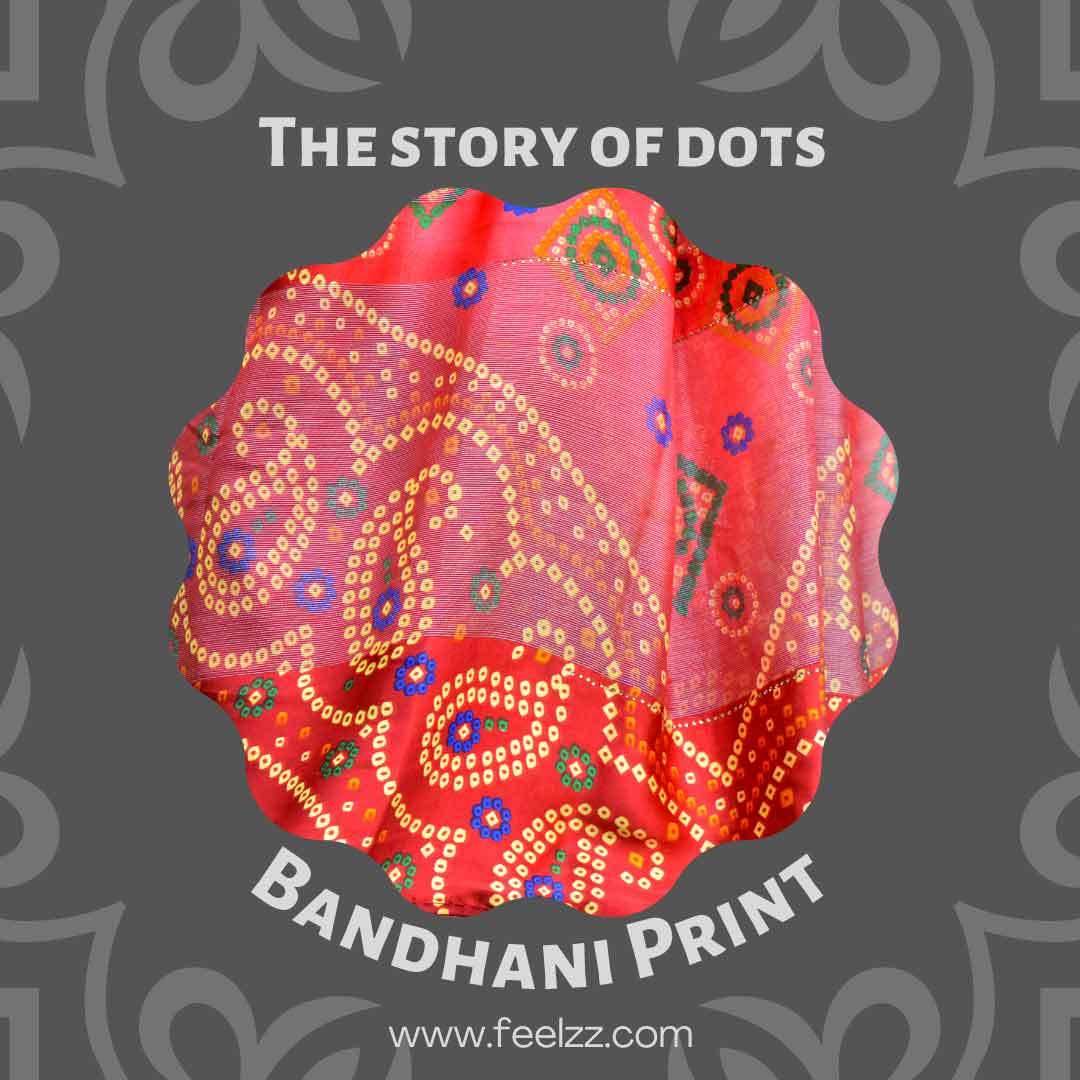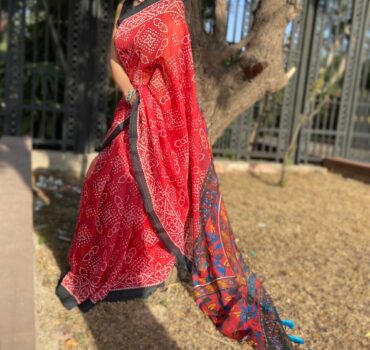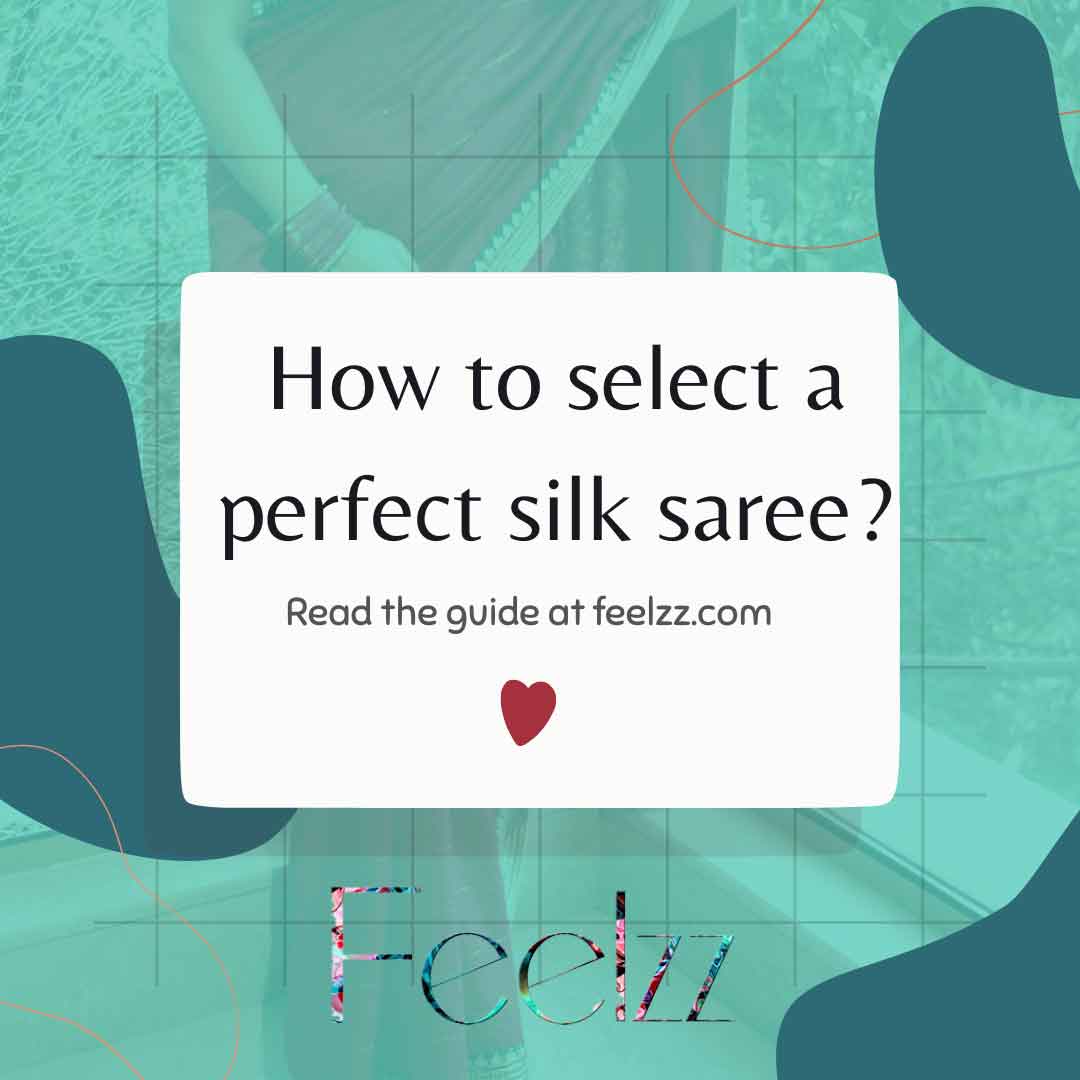The Story of Dots – Bandhej
Bandhej or Bandhani comes from the word ‘Bandhan’ that denotes tying up.
Indian states such as Gujarat, Rajasthan, and some parts of Uttar Pradesh practice Bandhej work, which is a type of tie-and-dye method. A kind of art that entails dyeing a fabric tied firmly with threads at various points for producing different patterns befits the description of Bandhani. Bandhej patterns are widely used in saree designs.
History
The origins of Bandhej are traced back 5000 years ago, which makes it one of the oldest forms of tie-and-dye arts. History suggests that the first Bandhani saree was adorned at a royal wedding around the same time that Bana Bhatt was writing Harshacharita, which is the biography of the Indian king Harsha; Bana was a Sanskrit writer from the 7th century.
Even if you visit the Ajanta caves, you can see one of the earlier visual representations of the Bandhani art form. The Khatri community of Gujarat are the frontrunners in producing Bandhani work in India. Bhilwara, Ajmer, Sikar, Udaipur, and Jaipur are among centers in Rajasthan that produce Bandhani-based turbans, sarees, and odhnis. In Gujarat, Jamnagar is popular for producing bandhani saree new design.
Bandhej Skill
Bandhani art entails tying the fabric tightly in knots at various points and dying it with vibrant colors thereafter. When the tied fabric is dyed, the knotted areas do not catch color; the fabric color stays on the tied ends.
After dying the cloth, you have to leave it out to dry in the open air. As per the weather conditions, the fabrics will dry. While fabrics take 2-3 days to dry in the monsoon season, they can dry within only 4-5 hours during the summer months. On the other hand, fabrics can dry within 7 hours during the winter season.
 Different types of Bandhani patterns
Different types of Bandhani patterns
When you shop for a Bandhani saree online, you have a range of colors and designs to select from; they vary as per the region where they are manufactured. Black, blue, green, red, and yellow – all are popular colors of Bandhani art.
In Bandhani saree party wear, you have an array of symbols to take your pick from. These include squares, strips, waves, and dots. Shikari, Ekdali, Mothra, and Leheriya are some types of Bandhani patterns; they vary as per how the cloth is tied.
When you shop for bandhej sarees online, you can select from Chandrokhani, Gharchola, Patori, and Khombi designs. In addition, chaniya cholis, salwar kameez, kurtas, and sarees have Bandhani designs. Different colors vary in meaning in Bandhani art.
Bandhani saree for girls can be of different kinds:
- Ekdali: a single knot
- Trikunti: three knots
- Chaubandi: four knots
- Boond: a small dot in a dark framework
- Kodi: shaped as tears
- Dungar Shahi: mountain designs
- Laddu Jalebi: Indian Sweets
All about Bandhani wear
Bandhani designs are popular among men and women wear.
Minimalistic Bandhani Salwar Kameez comprises daily wear for several women. Also, sarees with Leheriya patterns are apt for daytime ceremonies. Or, you can opt for a Ghatchola saree for wedding functions at night.
Many young girls fancy bandhej dupattas with white Salwar Kameez for office or casual wear. In addition, you can wear a red saree having bandhani work when attending marriage functions.
Moreover, a women’s designer saree with bandhani patterns makes for a great traditional outfit.
Conversely, bandhani motifs are the mainstay in men’s turbans.
Gujarat is the major market for Bandhani designs, although the demand for Bandhej patterns has been rising throughout India over the years. During the wedding and festive seasons, many people opt for Bandhani wear.
Tips to Care for your Bandhani outfits
Dry clean your Bandhej apparel as much as possible. If you need to iron your Bandhani outfits, make sure to put the iron on a low heat setting. This is because Bandhani designs can lose their appeal if you iron them on a high heat setting.
If you are looking to shop bandhani and various other designer saree online then visit – www.feelzz.com.




